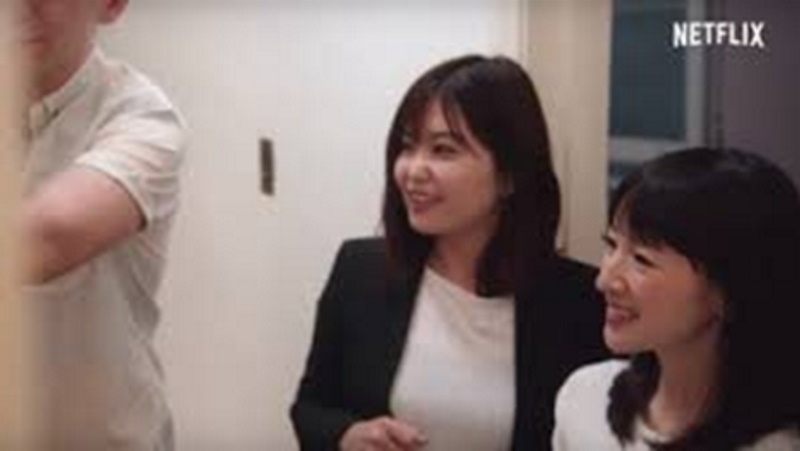New York-based Marie Iida, consecutive interpreter for Netflix’s Tidying Up with Marie Kondo March 3, 2019
7 reasons why Marie Iida’s interpretation sparks joy
Unless you live under a rock, you’ve heard about Tidying Up with Marie Kondo on Netflix. The 2019 reality TV series on Netflix is about Japanese organization consultant, Marie Kondo, as she transforms untidy homes into order. But there’s another Marie you may or may not have noticed in the cluttered sets: Marie Iida, Marie Kondo’s interpreter.
1. Born in Japan and having moved to the United States at the age of 6, Iida is bilingually flawless in English and Japanese. In Japanese, she hears the verb only at the end of the sentence, so she needs to be good at predicting what is coming when she’s interpreting from Japanese into English. This is a given for professional interpreters, and yet Iida’s English persona gives Kondo a voice without bringing undue attention to the interpreter or the interpretation.
2. Iida understands that the interpretation is not about her, or her linguistic prowess, and never upstages Marie Kondo. Rather, she makes the difficult task of mirroring Kondo’s intention, energy, and feelings easy while making the nuances in Japanese seem idiomatic.
3. And although she is not a trained interpreter, Iida recommends in an interview that those interested in a career in interpreting do get the proper training. Having learned consecutive interpretation by shadowing interpreters and having worked as a translator, she earns the public’s respect by understanding that both translation, simultaneous and consecutive interpretation all require different skills.
4. Marie Iida credits shadowing as a good practice exercise for interpretation: while listening to a recording, an interpreter should repeat what the speaker or the recording says, word for word, in the same language as the recording. She also suggests reading extensively in both languages as a way to expand one’s active vocabulary beyond the basic 700 words.
5. This star interpreter invests at least 2 weeks researching clients and topics she’ll be interpreting. Not only has she searched for any videos of Marie Kondo’s lectures to get a sense of diction and style, but she has also read Kondo’s books:
6. The audience will often see her quickly jotting down notes on a notepad, which aid her memory to give Kondo a voice in English. She also understands that these notes are not particularly helpful after the interpretation.
7. (And my FAVORITE reason!) Her Vocabulary Notebook of Shame: as an interpreter, she has enough self-awareness/down-to-earthness to keep a list of every term that she couldn’t interpret at all or well enough and creates a better translation for next time. Though she may cringe every time she looks at it, the list serves as excellent preparation for future assignments.
Check out this fun interview of Marie Iida talking shop about translation and interpretation:


 ALL In Portuguese
ALL In Portuguese
Recent Comments